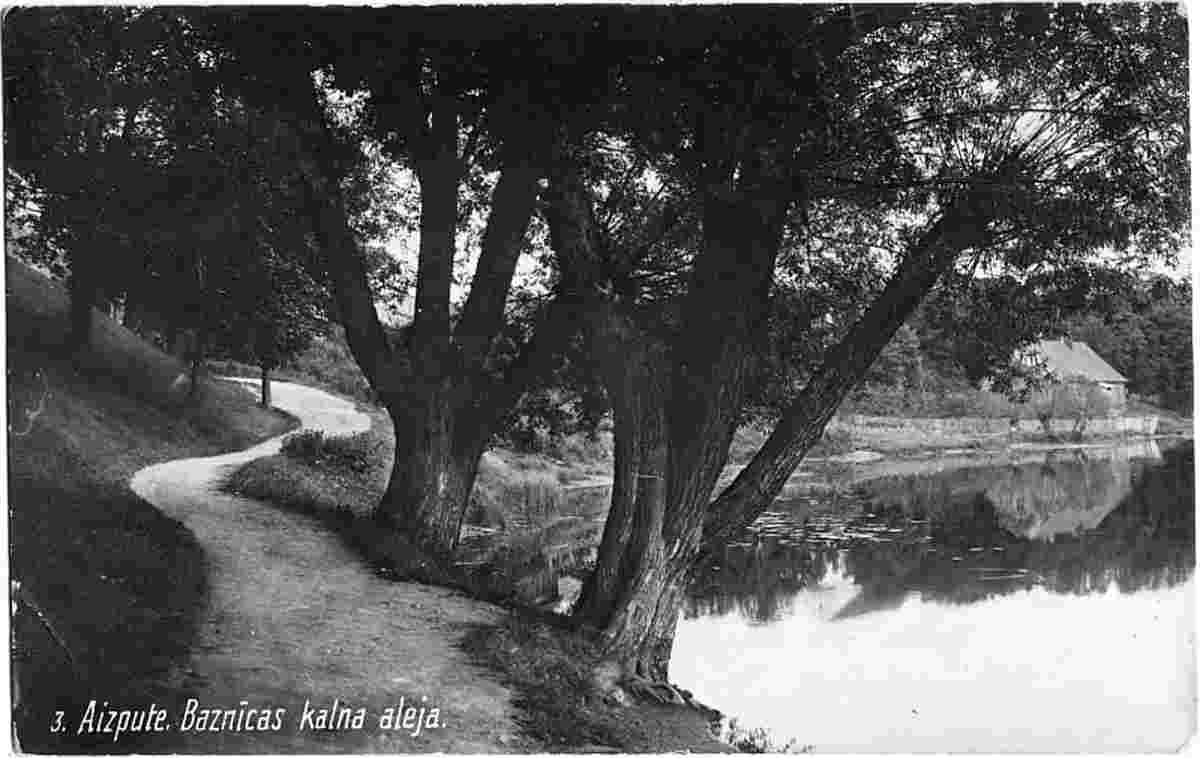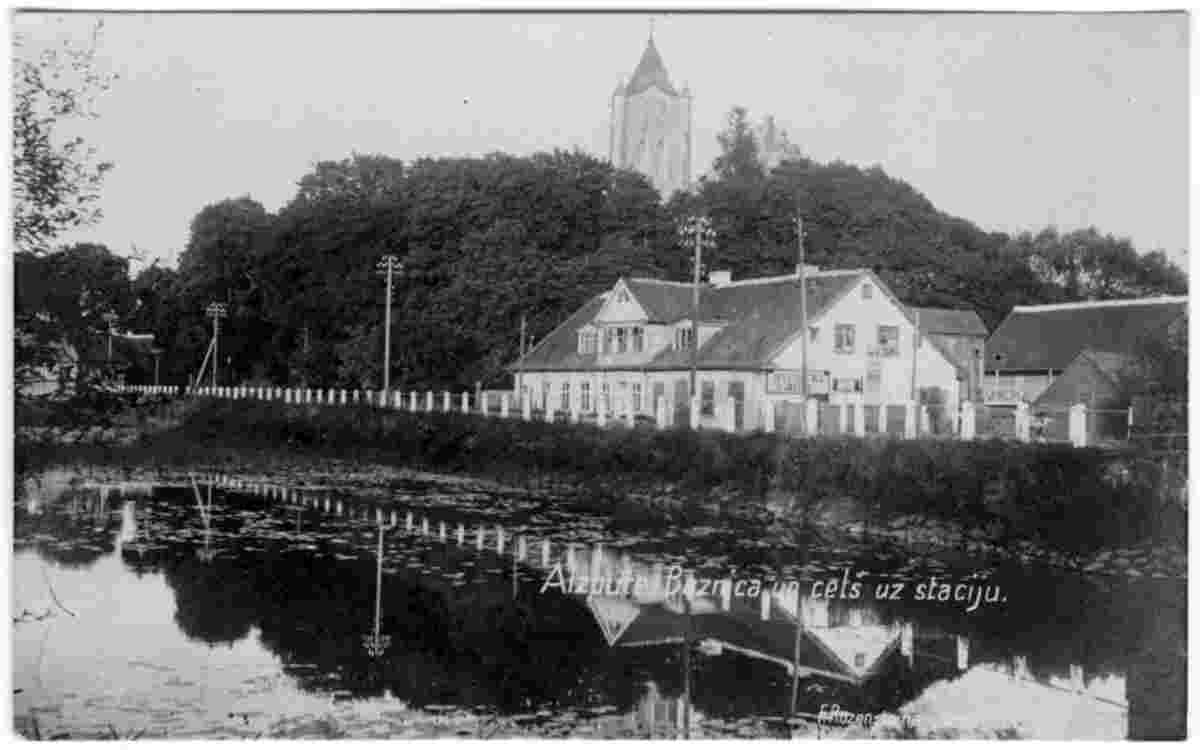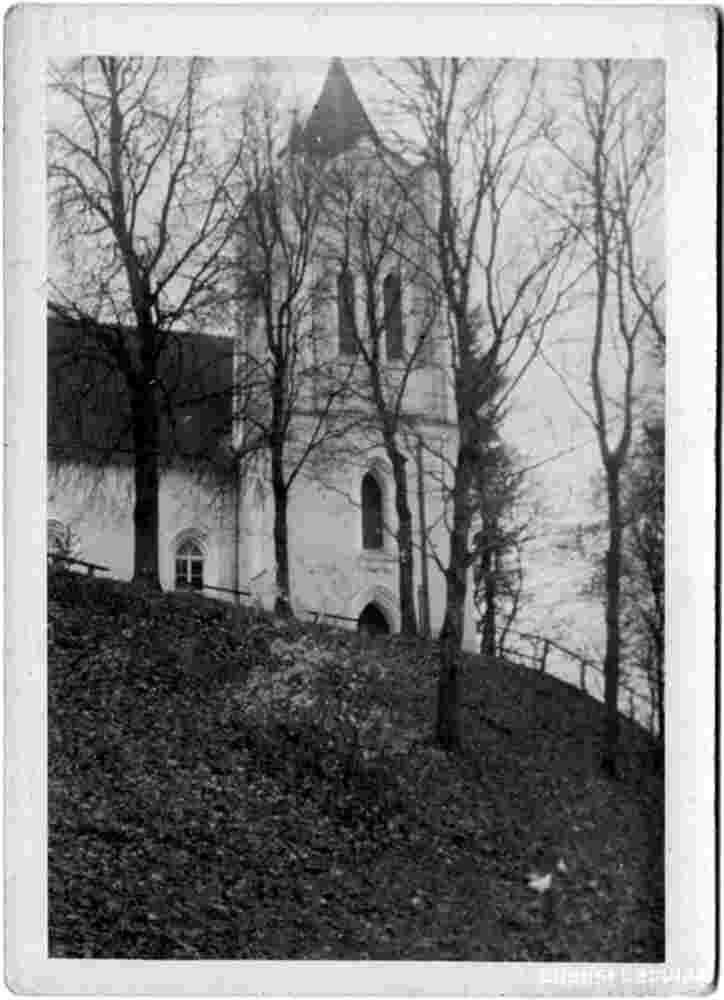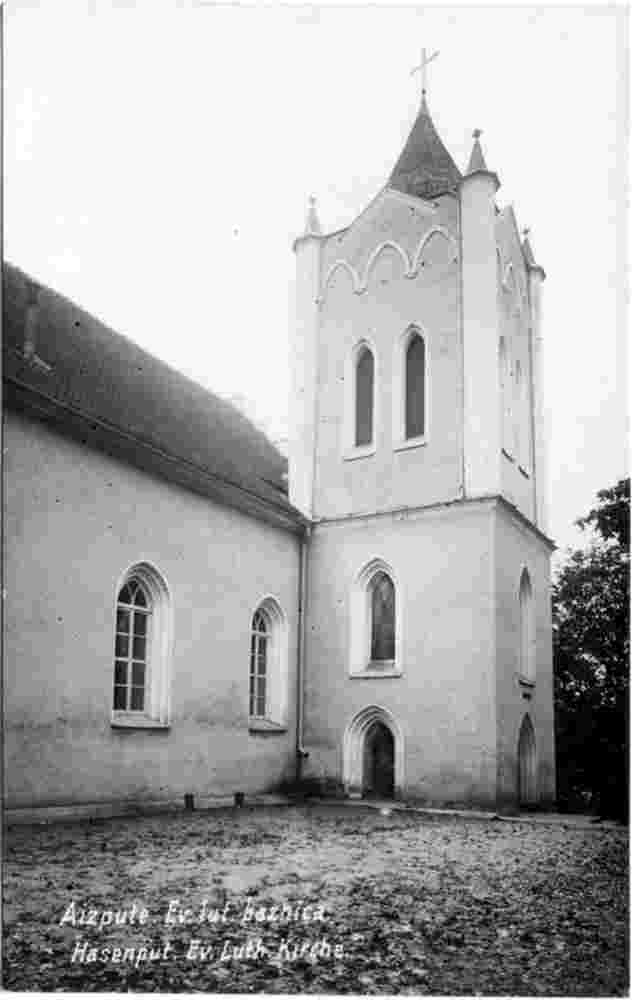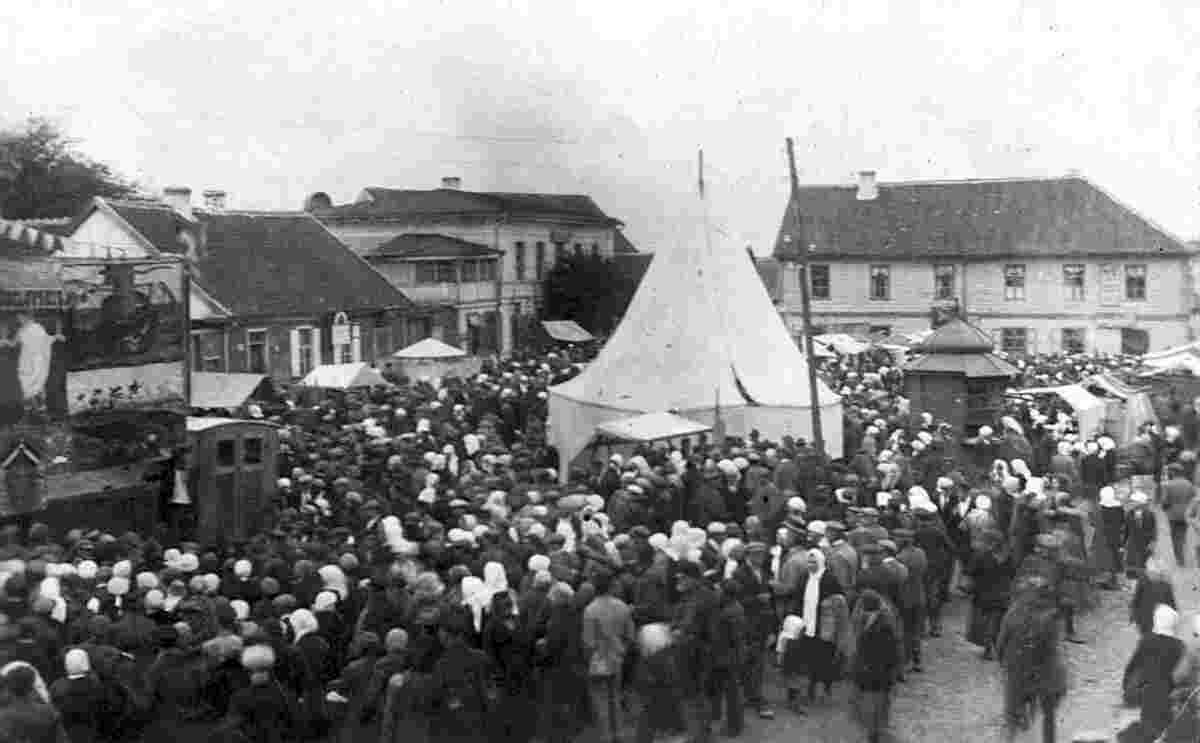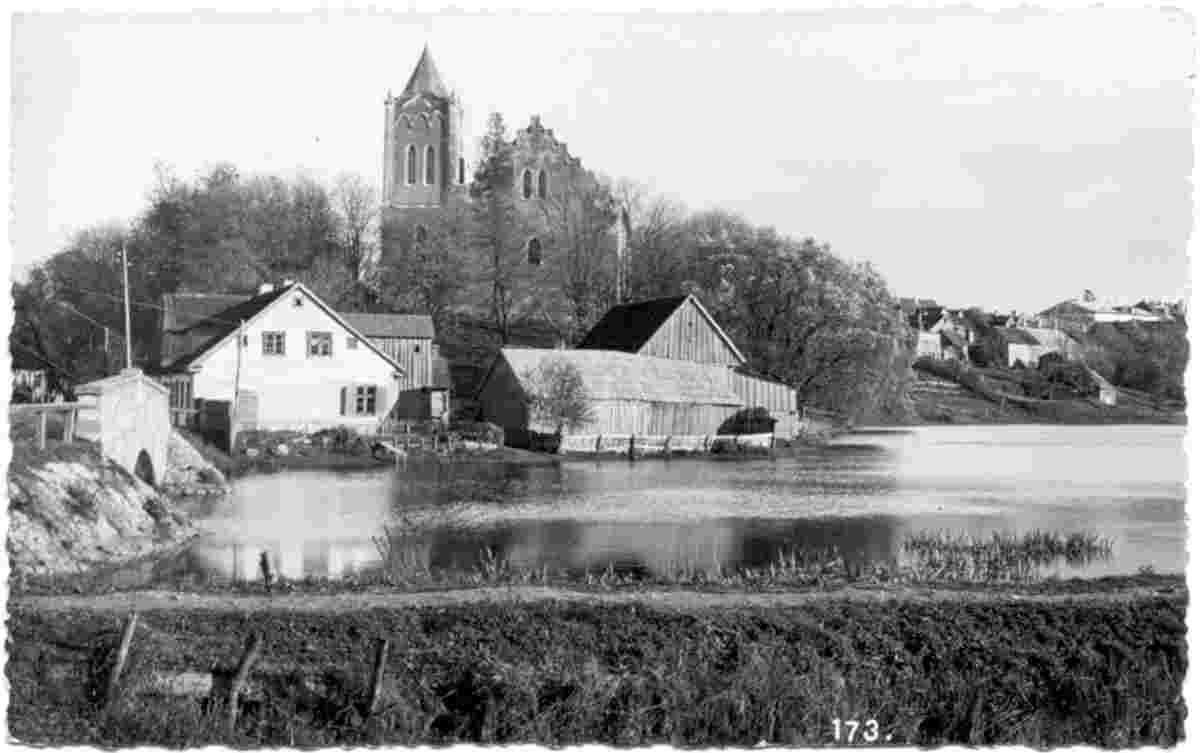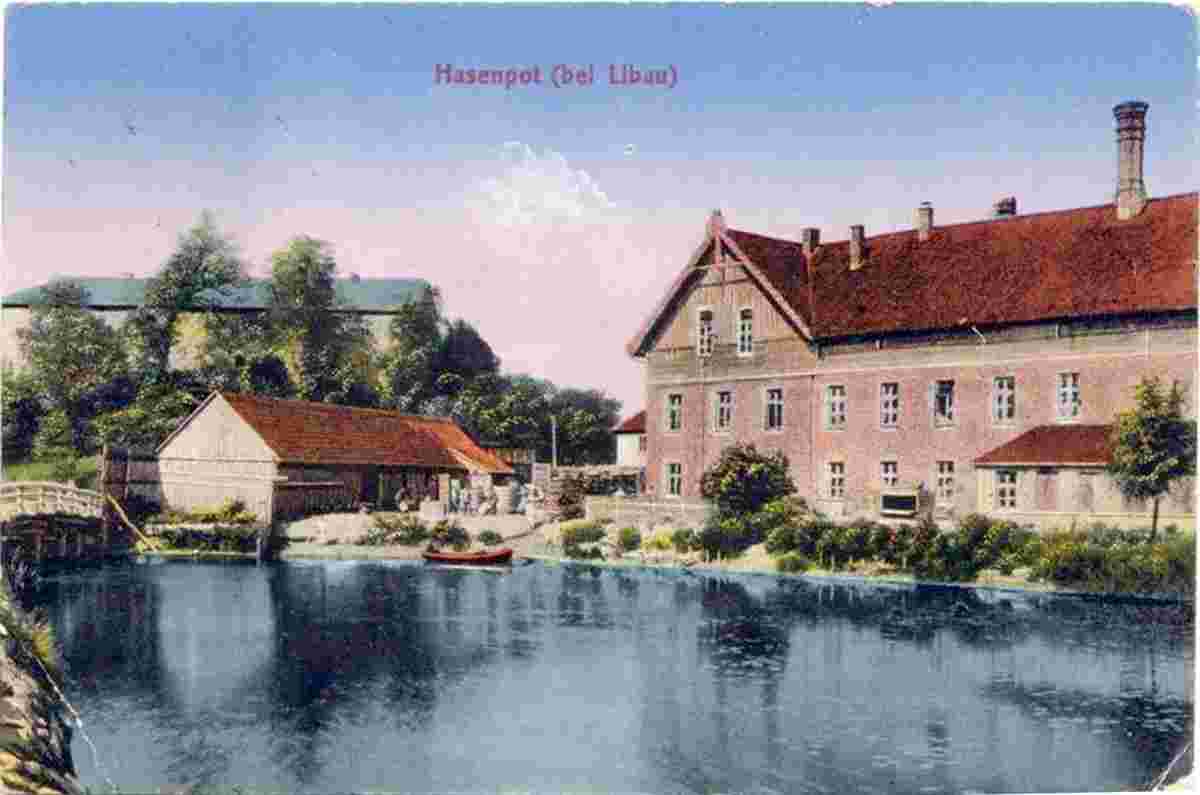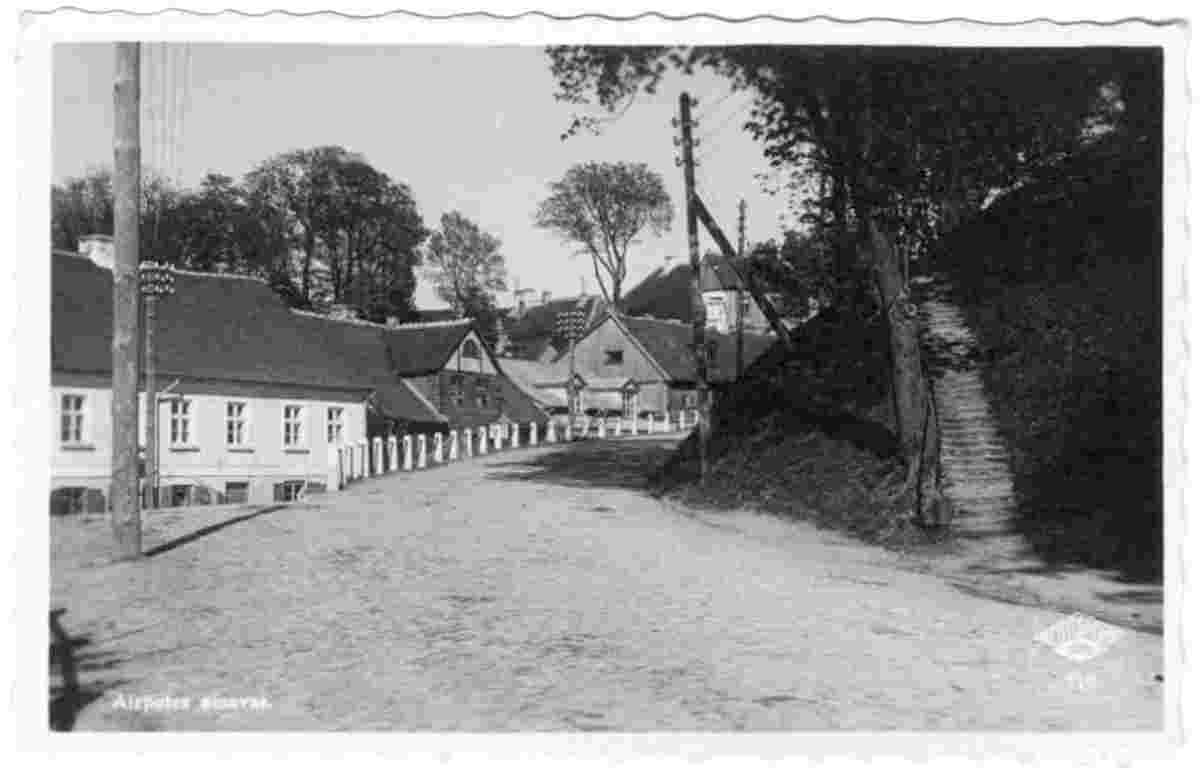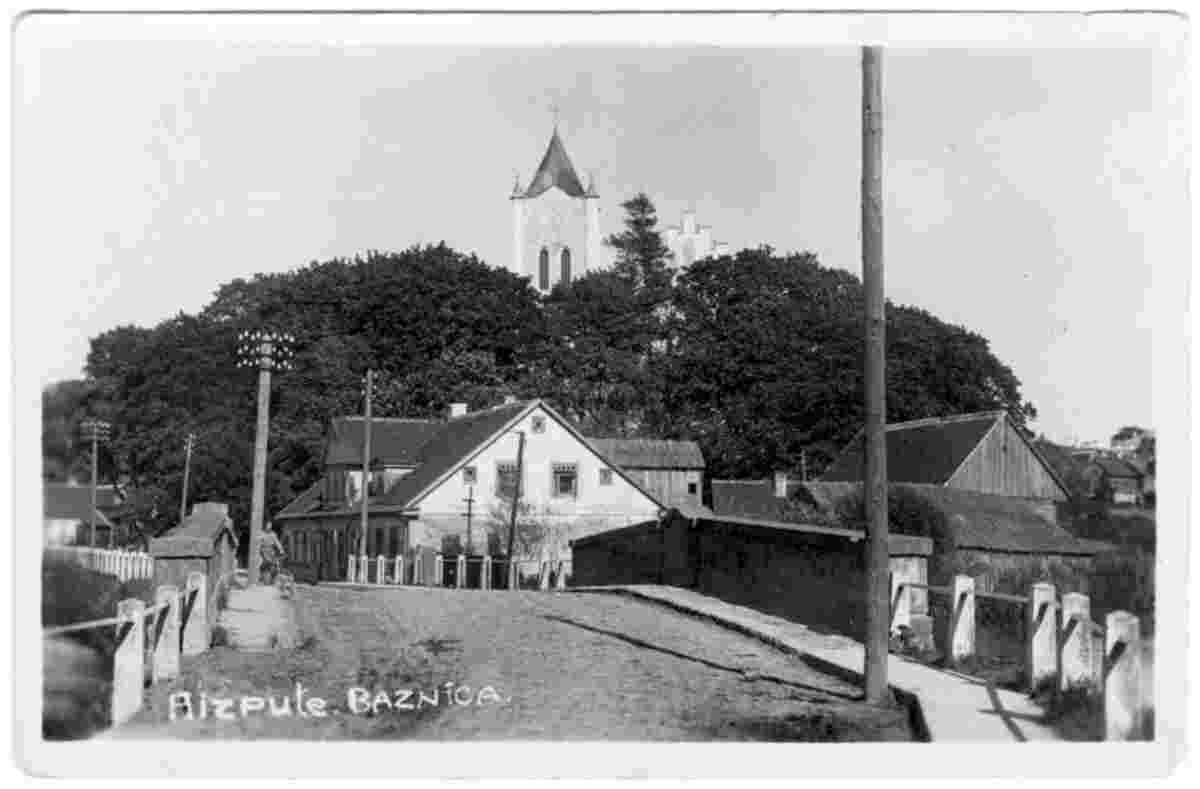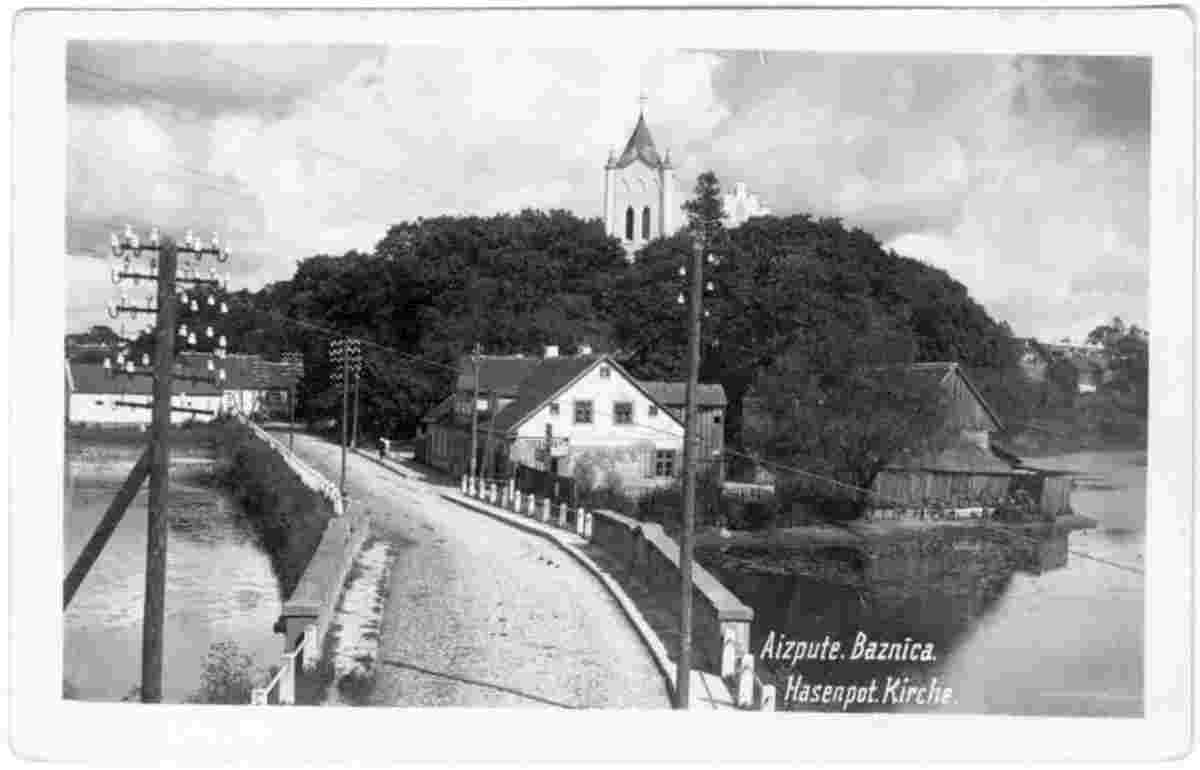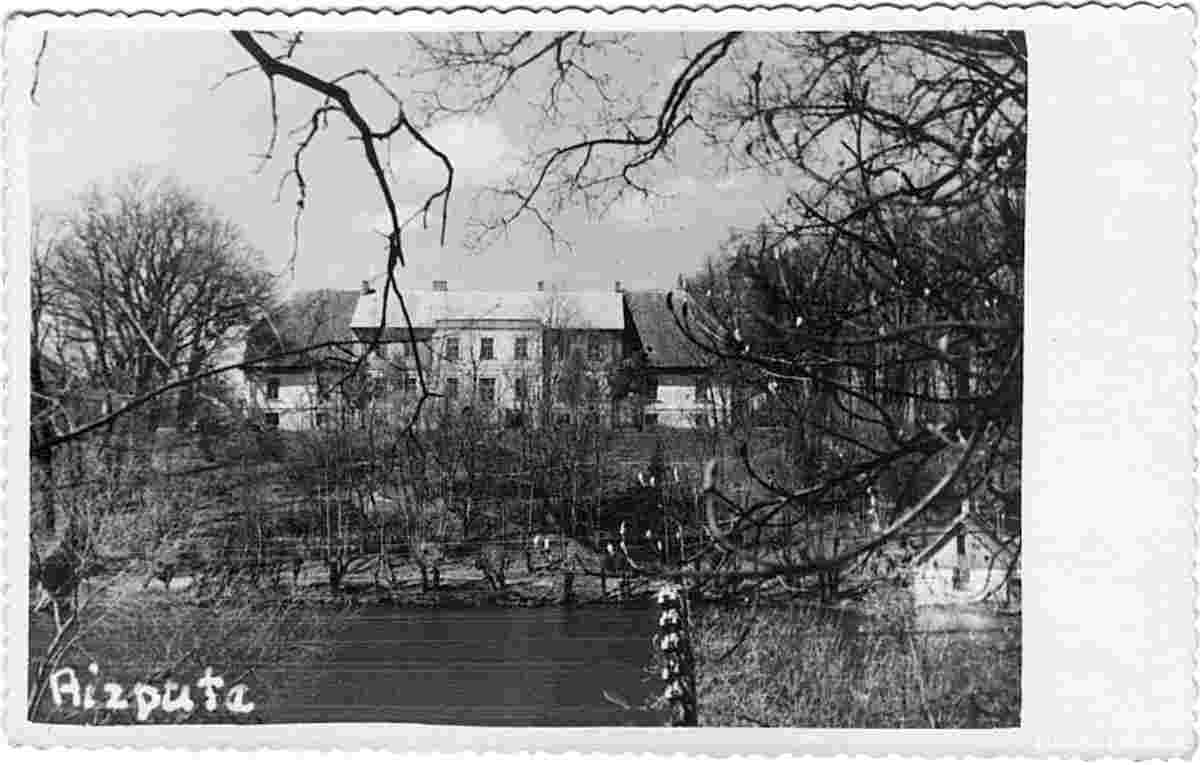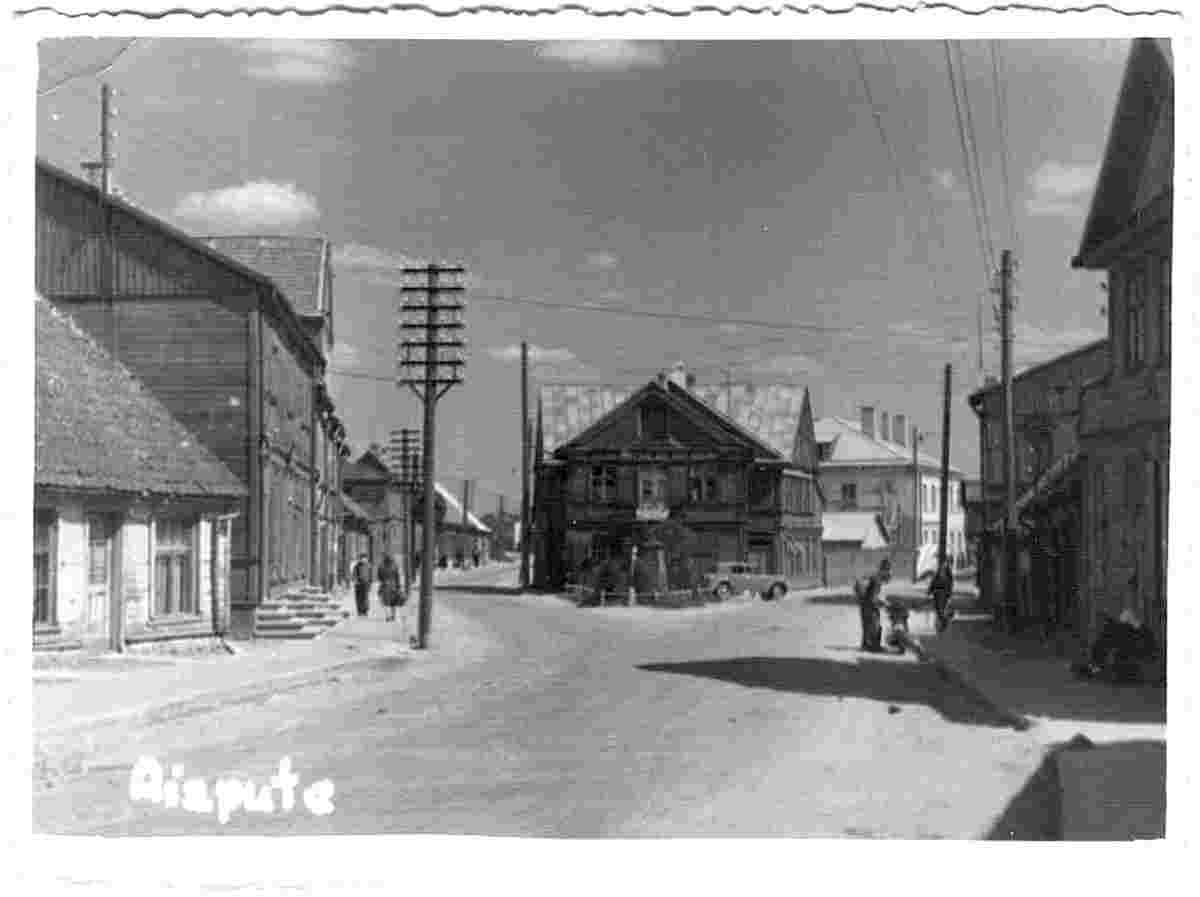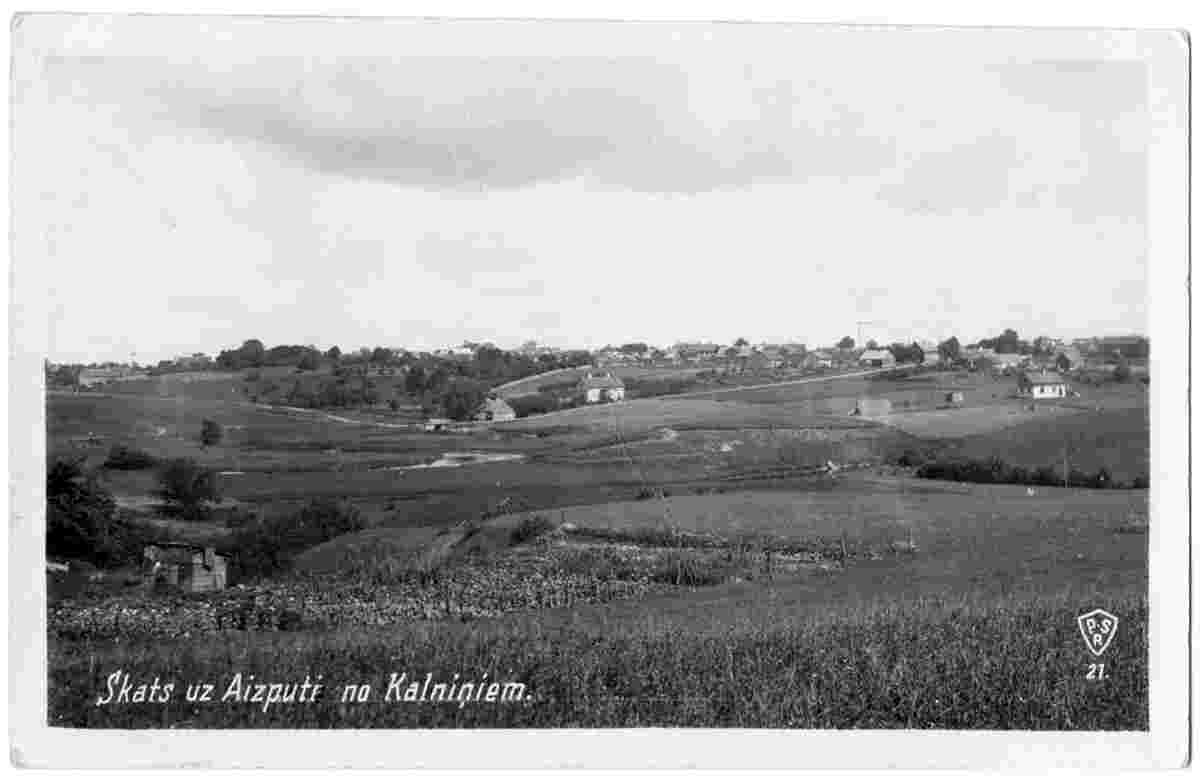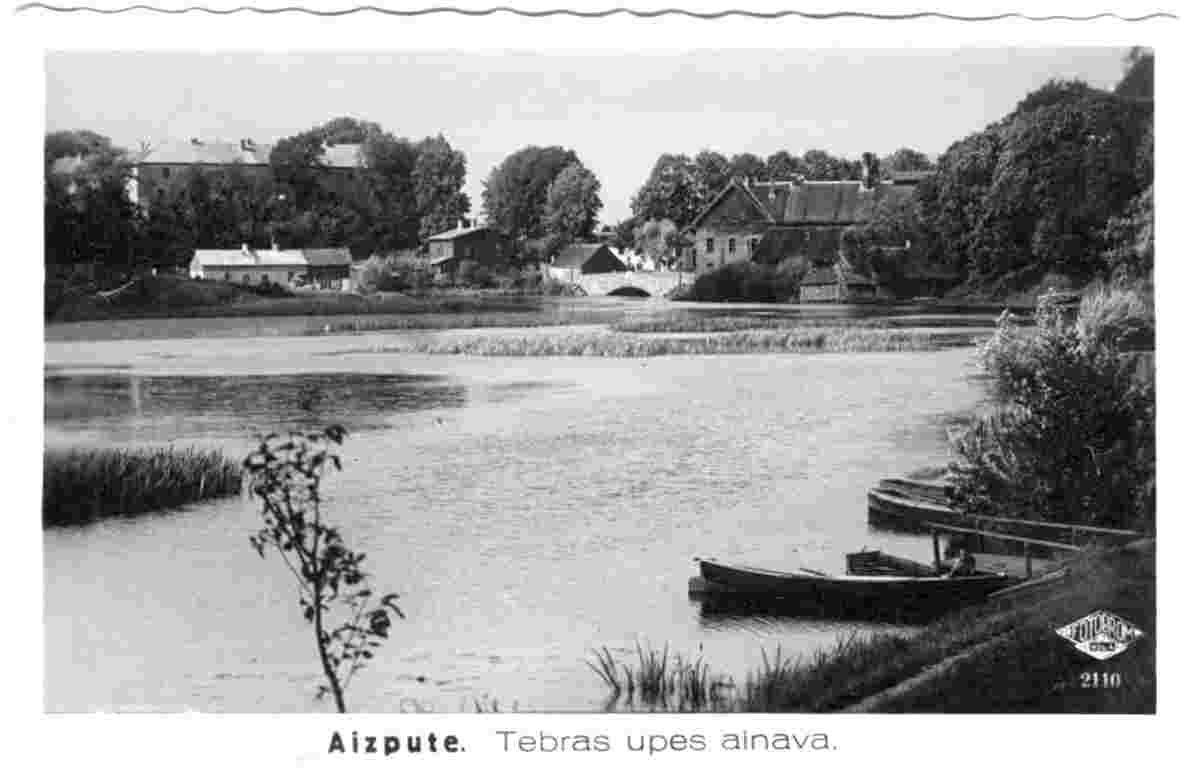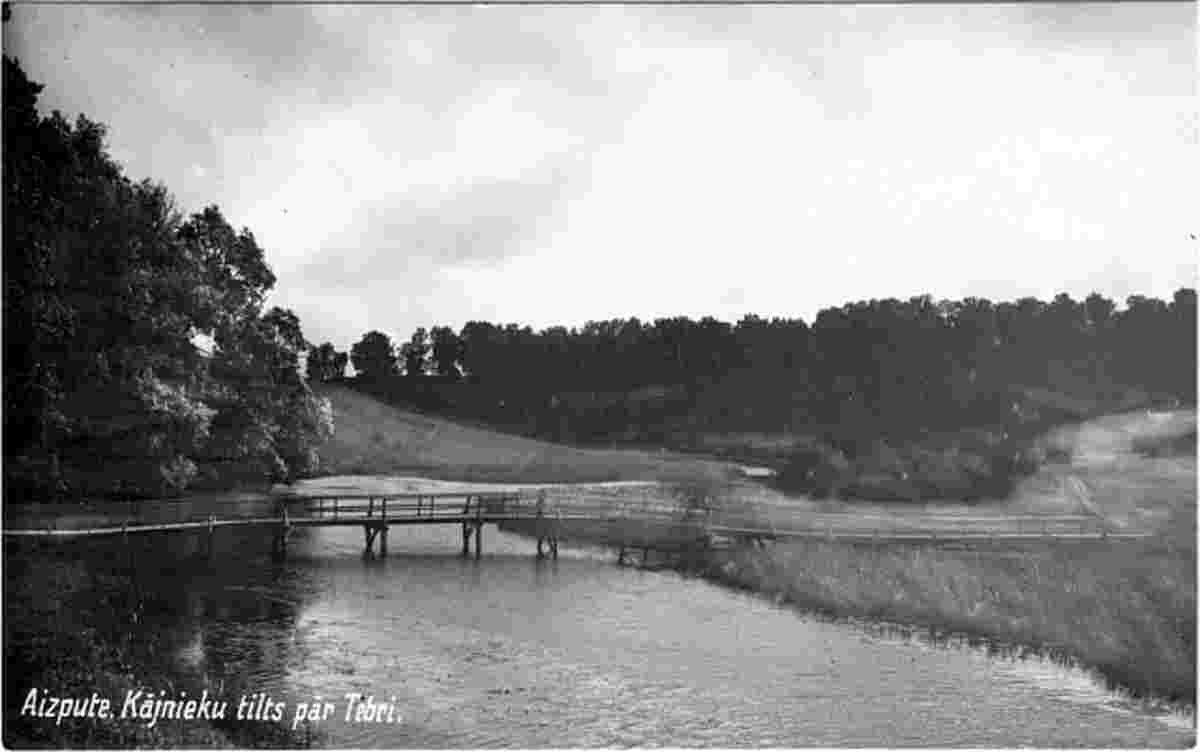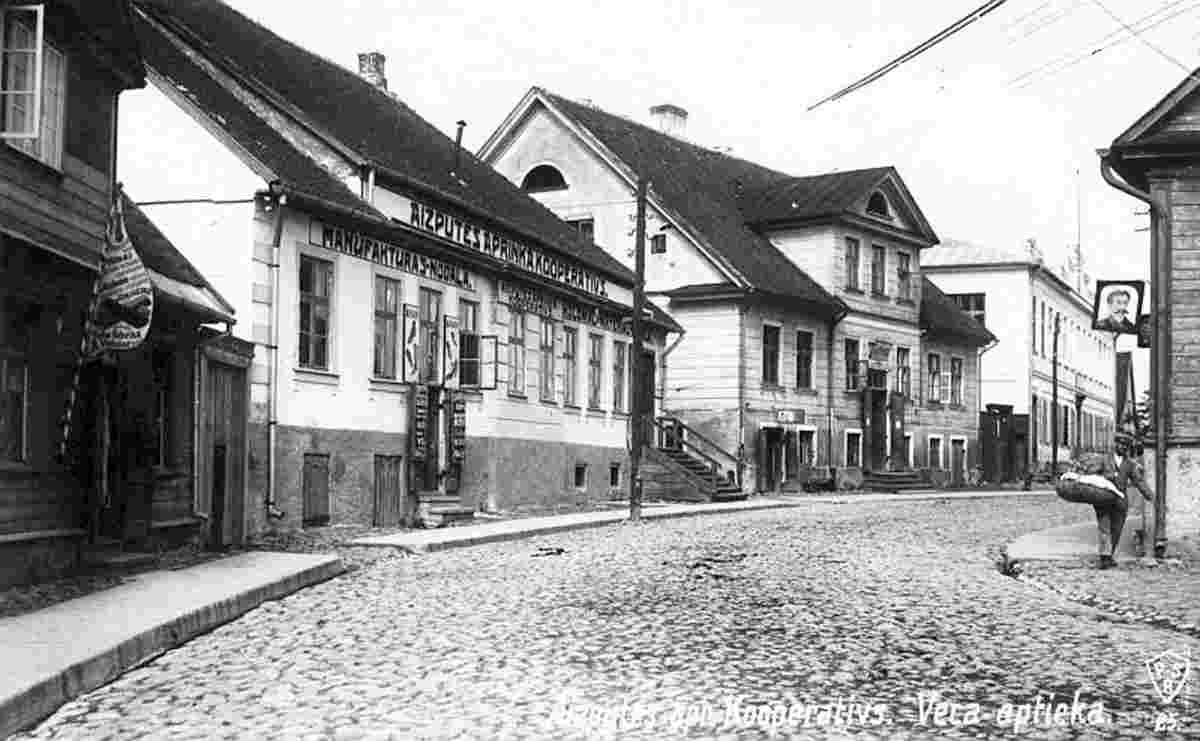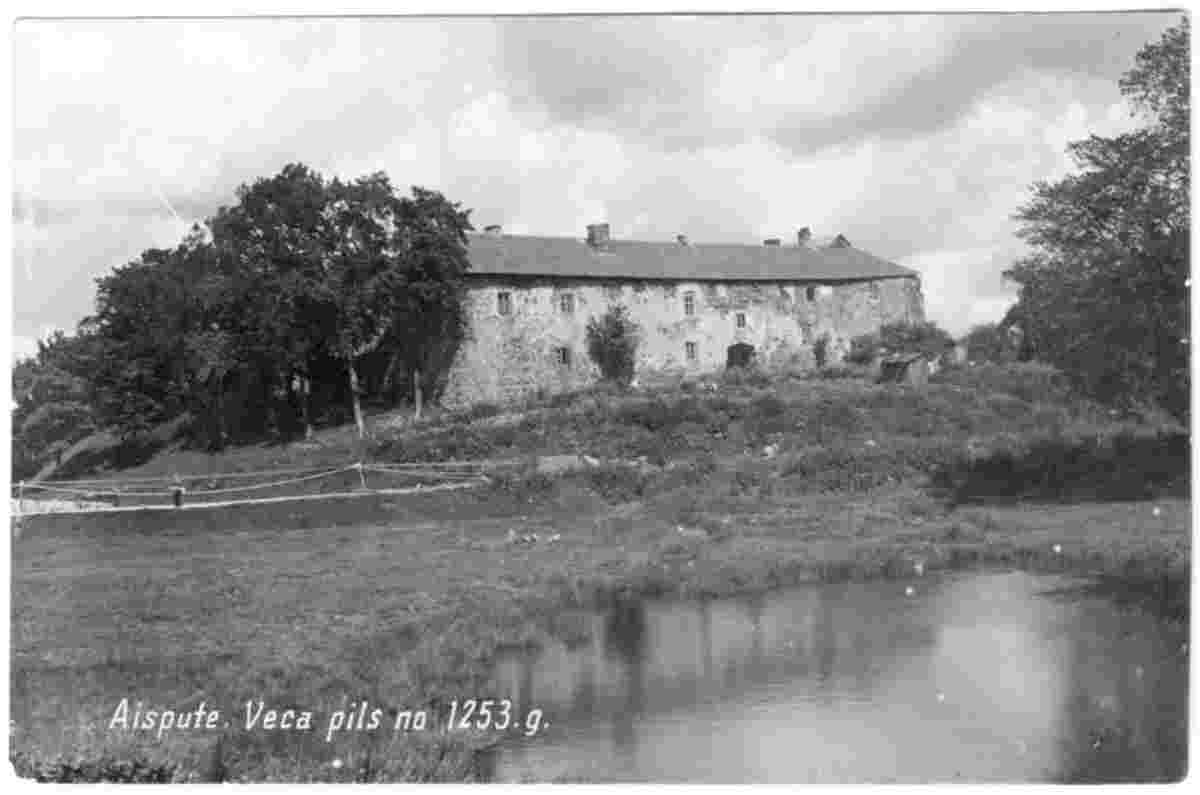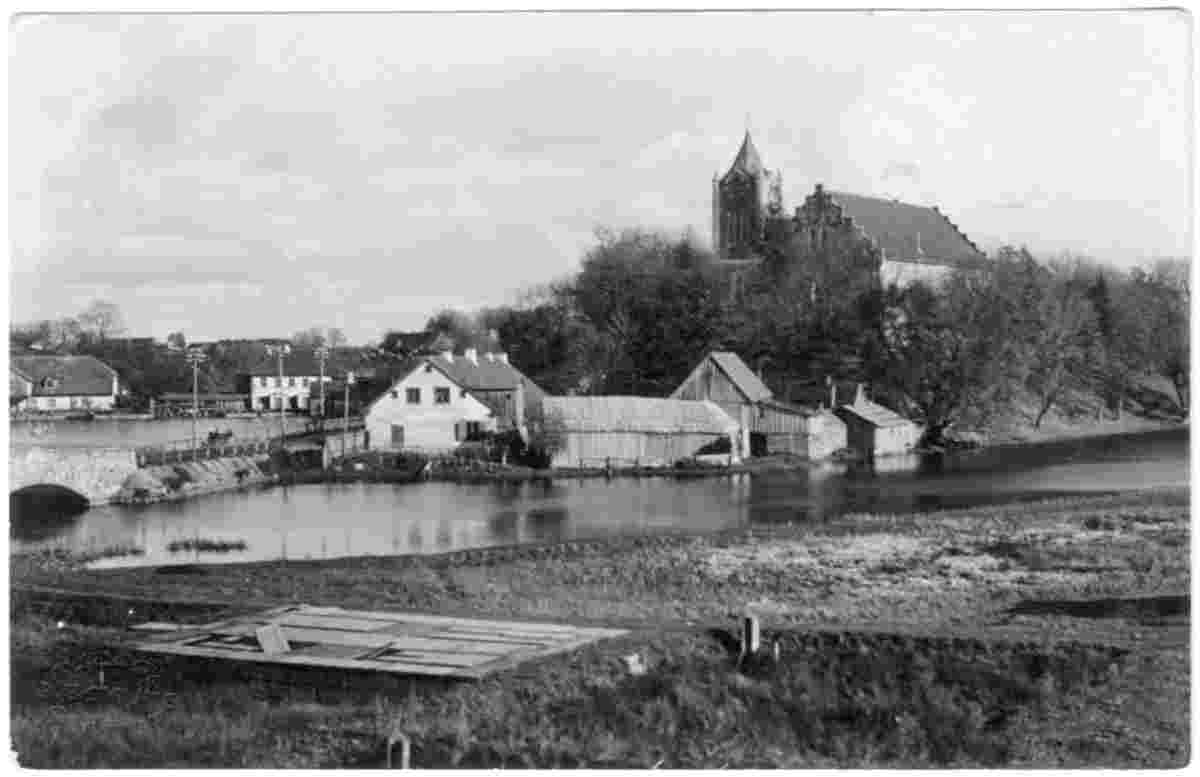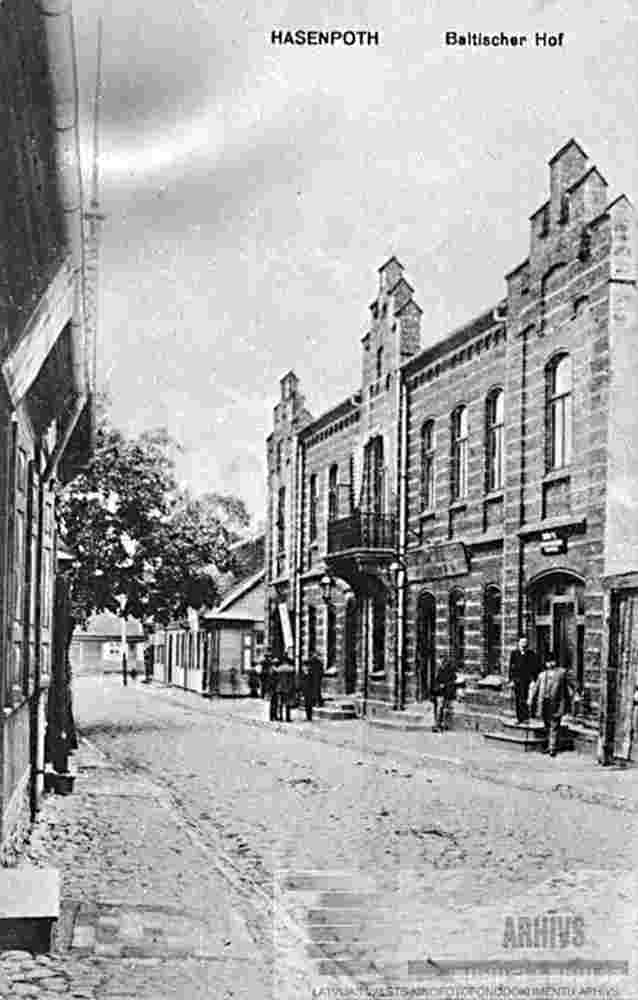Historical and old photos of Aizpute (Gazenpot)
HistoryThe territory of modern Aizpute was inhabited by ancient Curonians since the 9th century. St. John Lutheran church was built on the Curonian hillfort. In the 13th century during the Livonian crusade, the territory of Aizpute was conquered by German crusaders. In 1248 the master of the Livonian Order Dietrich von Grüningen ordered the building of a stone castle in Aizpute. The castle and the whole settlement became known as Hasenpoth. After the partition of Courland in 1253 Aizpute became part of the Bishopric of Courland. In 1260 Aizpute church was built. Bishop of Courland Otto granted Magdeburg rights to Aizpute in 1378. In the second half of the 16th century Aizpute experienced rapid development because the Tebra river was used as the main trade route for the merchants of Aizpute who shipped their cargo down to the sea. After the Polish-Swedish war all trade and shipping infrastructure was destroyed and Aizpute started to experience decline. During the period 1611-1795 it was under the power of the Polish–Lithuanian Commonwealth as a capital of the semi-autonomous Powiat Piltynski (District of Piltene). In 1795 Aizpute and the whole of Courland was incorporated into the Russian Empire and became part of the Courland Governorate. During the Russian revolution of 1905 Aizpute was one of the places where local revolutionists showed armed resistance to Cossack punitive units. It led to the so-called Aizpute War. During the period of the Republic of Latvia, Aizpute became the centre of a district, but in the Soviet period it became incorporated into Liepāja District. In 2009 Aizpute became the centre of Aizpute Municipality. Its current name is the Lettization of the German one and is officially in use since 1917. Origin: en.wikipedia.org | ||||||||||||||||||||
 |
Historical and old photos of Aizpute (Gazenpot) Aizputes vēsturiskās un senās fotogrāfijas (Gazenpot) |
| Main page • Countries of Europa • Cities of Latvia |
| Robinson Rd, CB 13862 Nassau, NP, The Bahamas |
